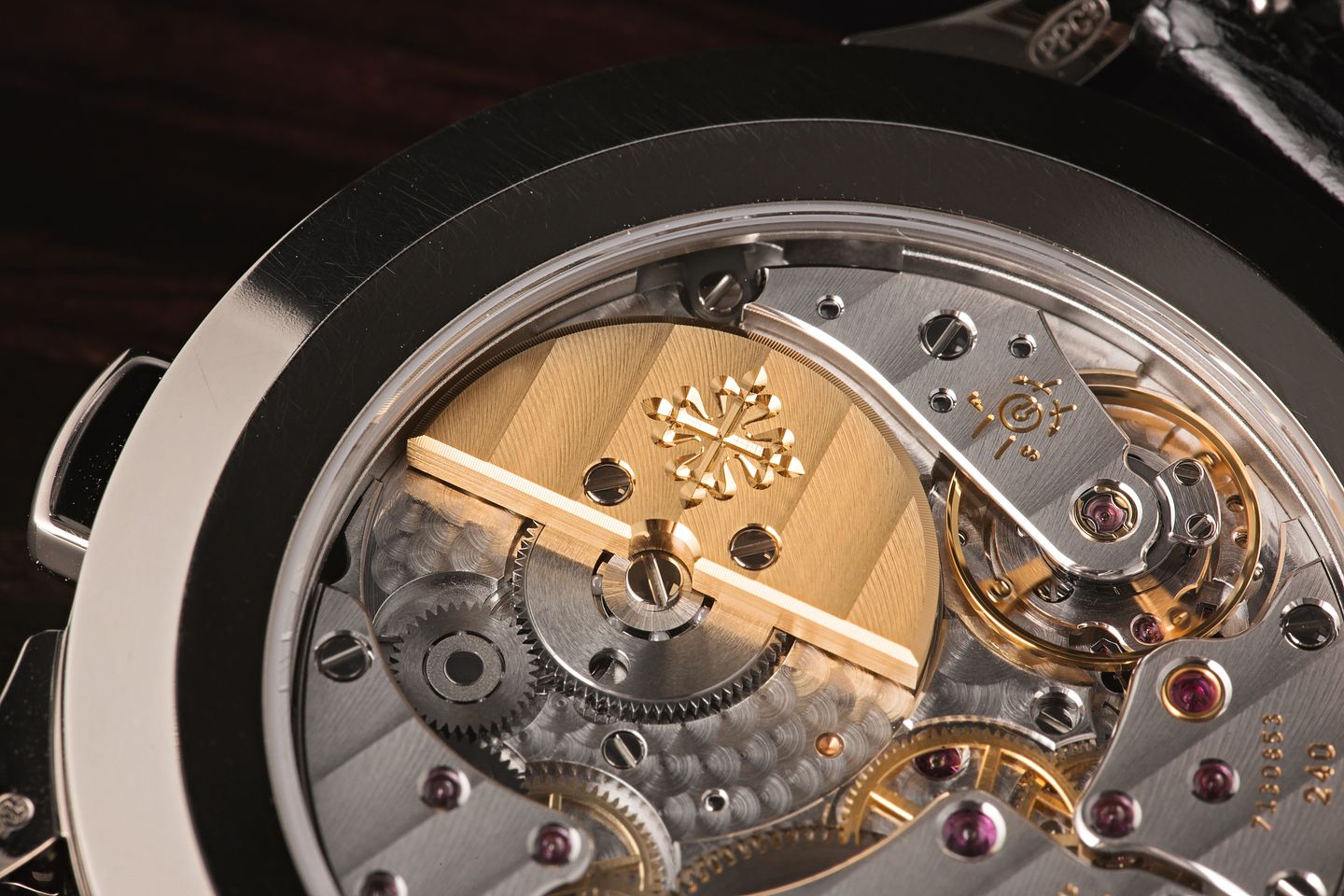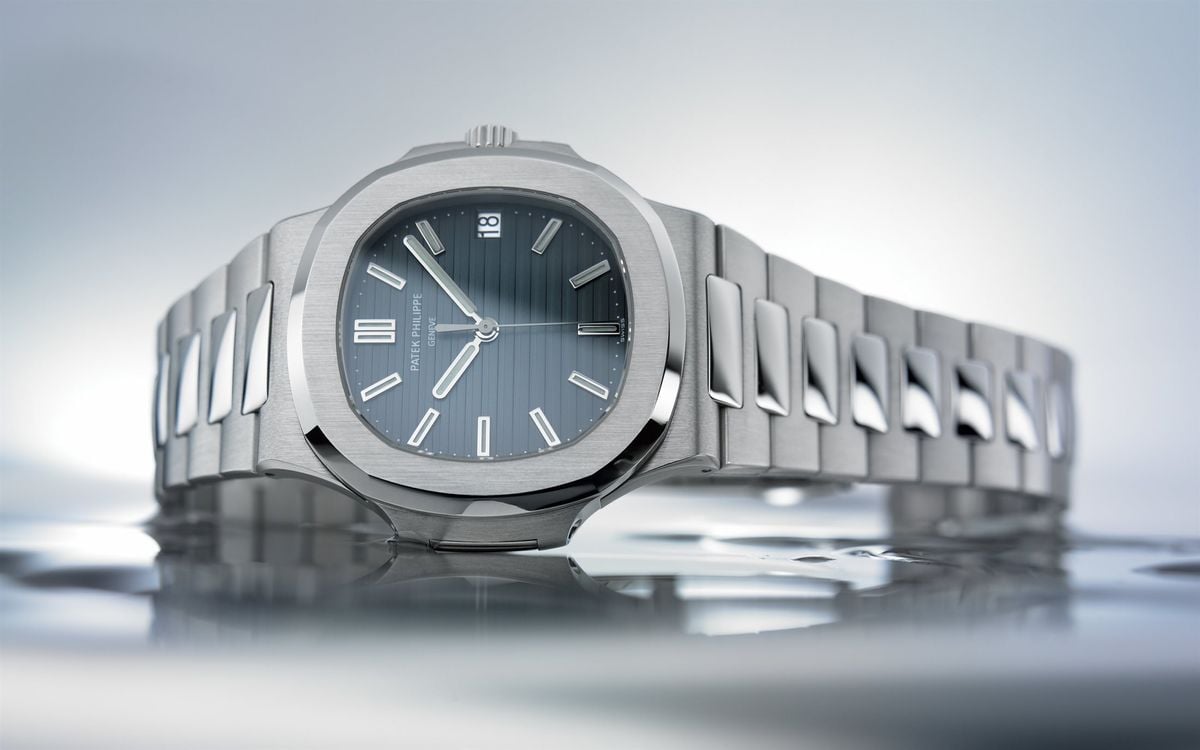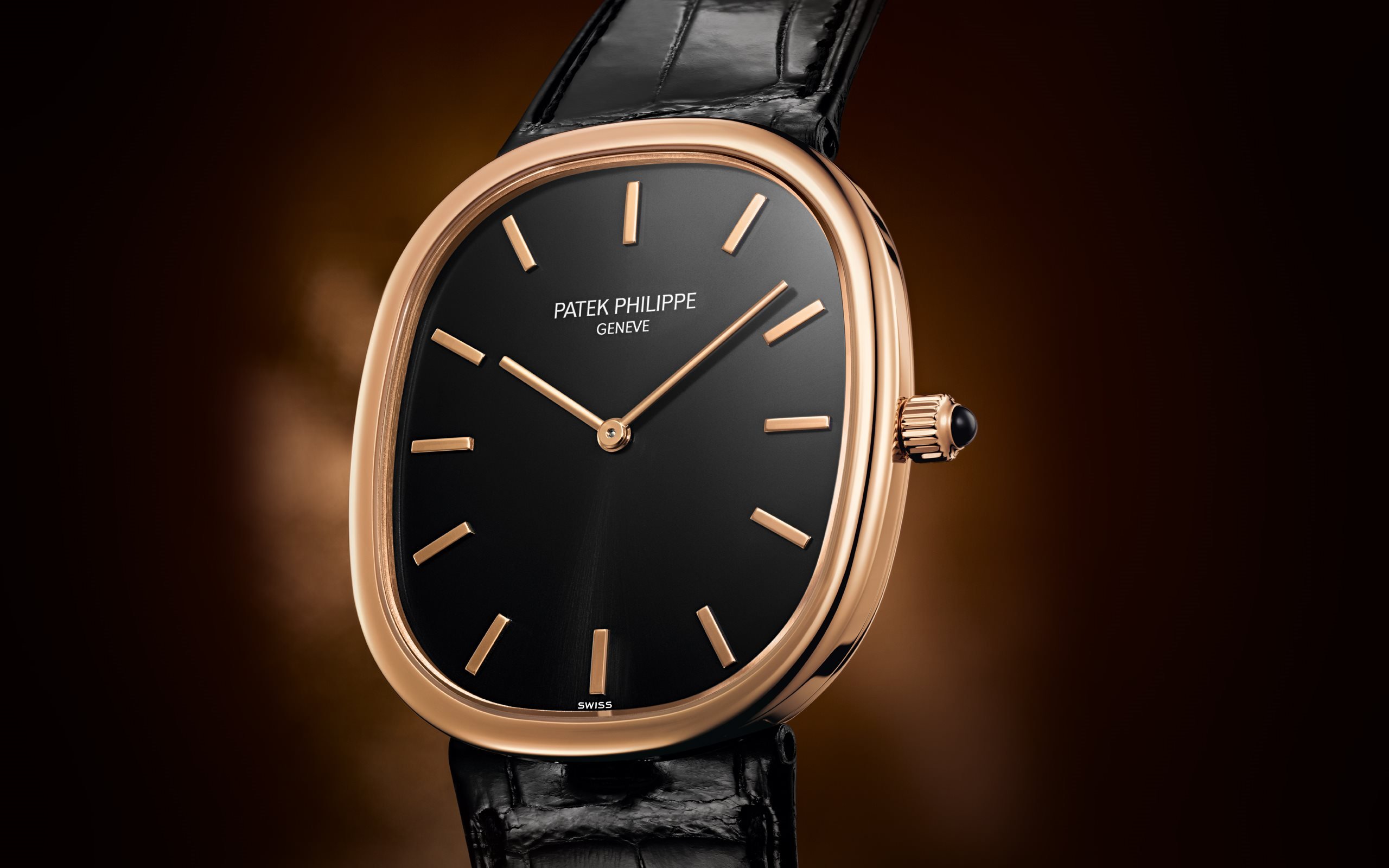Complex to build, yet so easy to use, the Patek Philippe World Time has been a mainstay in the brand’s catalog since the mid-20th century. Today, we’re reviewing the most current version of the famed watch, the Patek Philippe World Time ref. 5230G.
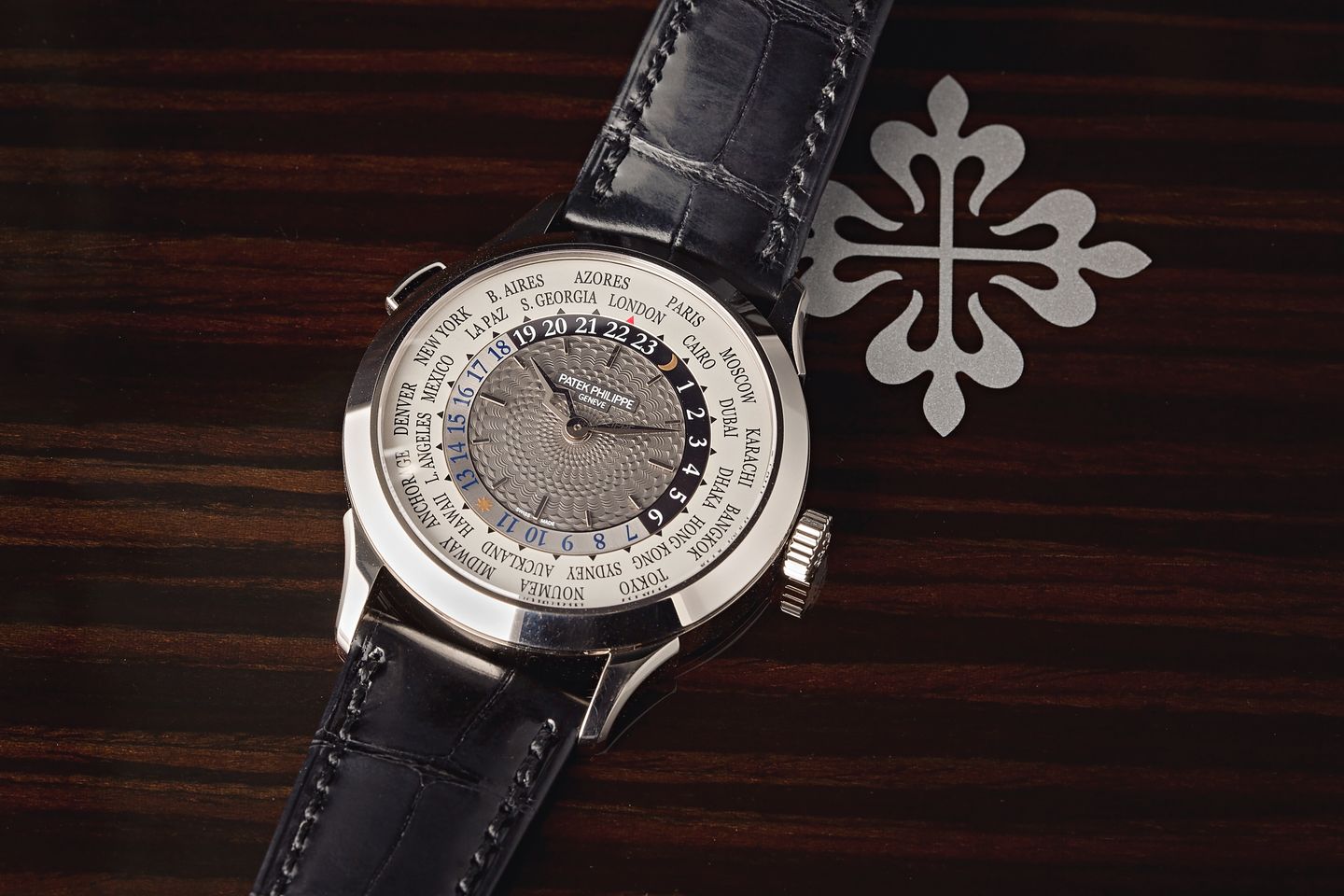
Louis Cottier and the World Timer Complication
We may take it for granted today, but the concept of standardized time zones did not appear organically; instead, it had to be formalized. In fact, it was only in 1884, at the International Meridian Conference in Washington D.C., when diplomats agreed to adopt a single Prime Meridian (located in Greenwich, England). This made way for the standardization of global time zones.
Fast-forward to 1931, and Swiss watchmaker Louis Cottier unveils a complication capable of displaying the times of the 24 time zones. Cottier’s world time mechanism cleverly used a rotating bezel inscribed with 24 major cities, each representing a different time zone. It wasn’t long before Patek Philippe took interest in Cottier’s world time complication. Thanks to Cottier’s movements, in 1937, Patek Philippe introduced their first world time watches: the round, yellow gold ref. 1415/1 HU (Heure Universelle) and the rectangular, pink gold ref. 515 HU.
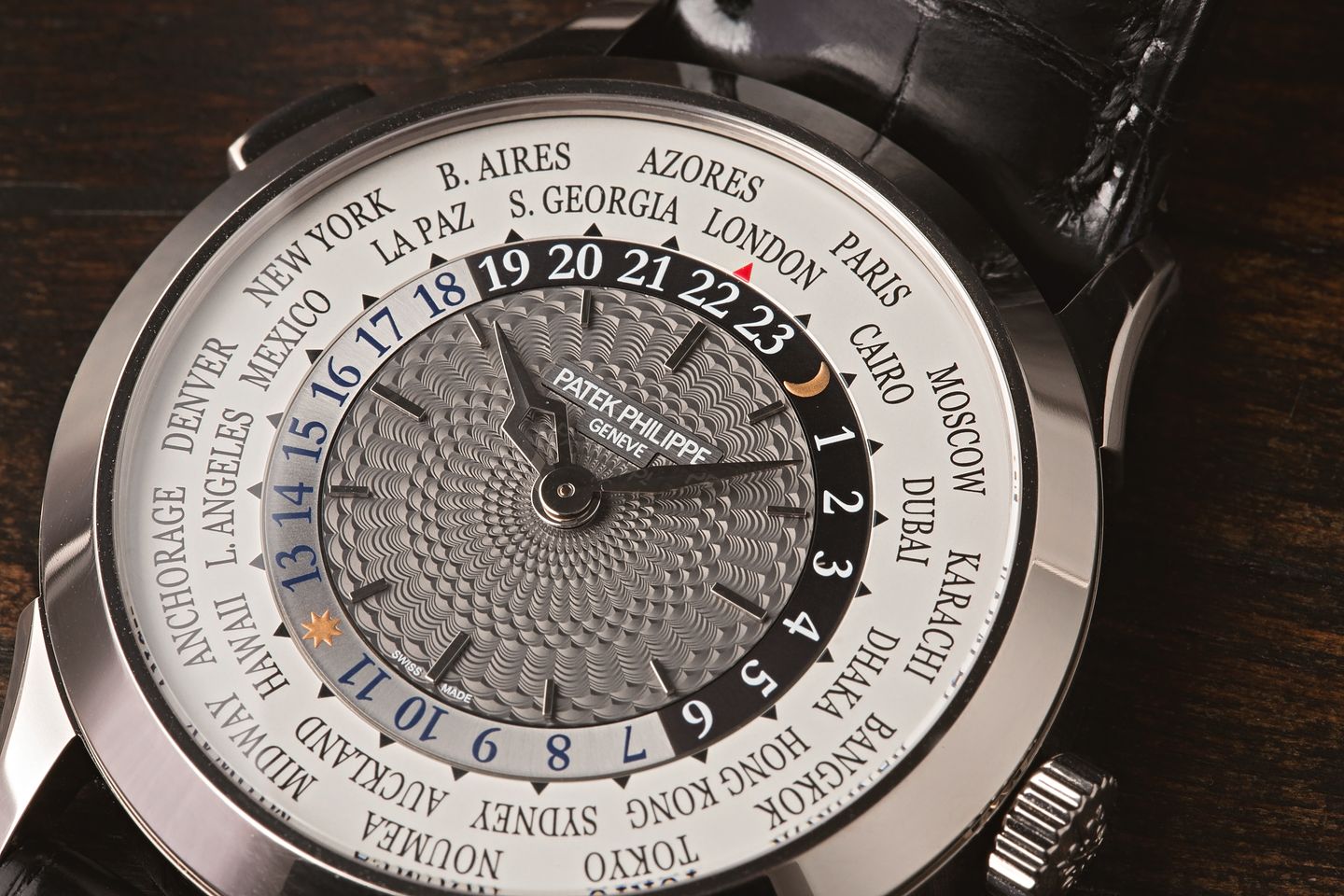
Modern Mechanics: Patek Philippe World Time 5230G
Patek Philippe introduced the World Time 5230 at Baselworld 2016 as a successor to the previous World Time ref. 5130. The case of the ref. 5230 measures 38.5mm in diameter and 10.23mm thick. Patek makes this Word Time watch in either 18k rose gold or 18k white gold; the ref. 5230G is the white gold version.
The size of the case (which is in fact 1mm smaller than the ref. 5130) is just right, and the lack of crown guards emphasizes the elegance of the watch. The design of the dial makes it super easy to read, despite all the city names around the periphery.
At the center of the dial is a gray hand-guillochéd section, housing the applied white gold hour markers and center hands. Note the shape of the pierced hour hand, which adds an intriguing design touch to the watch. Following the gray center is the 24-hour disk, fittingly split into color-coded day hours (silver) and night hours (black).
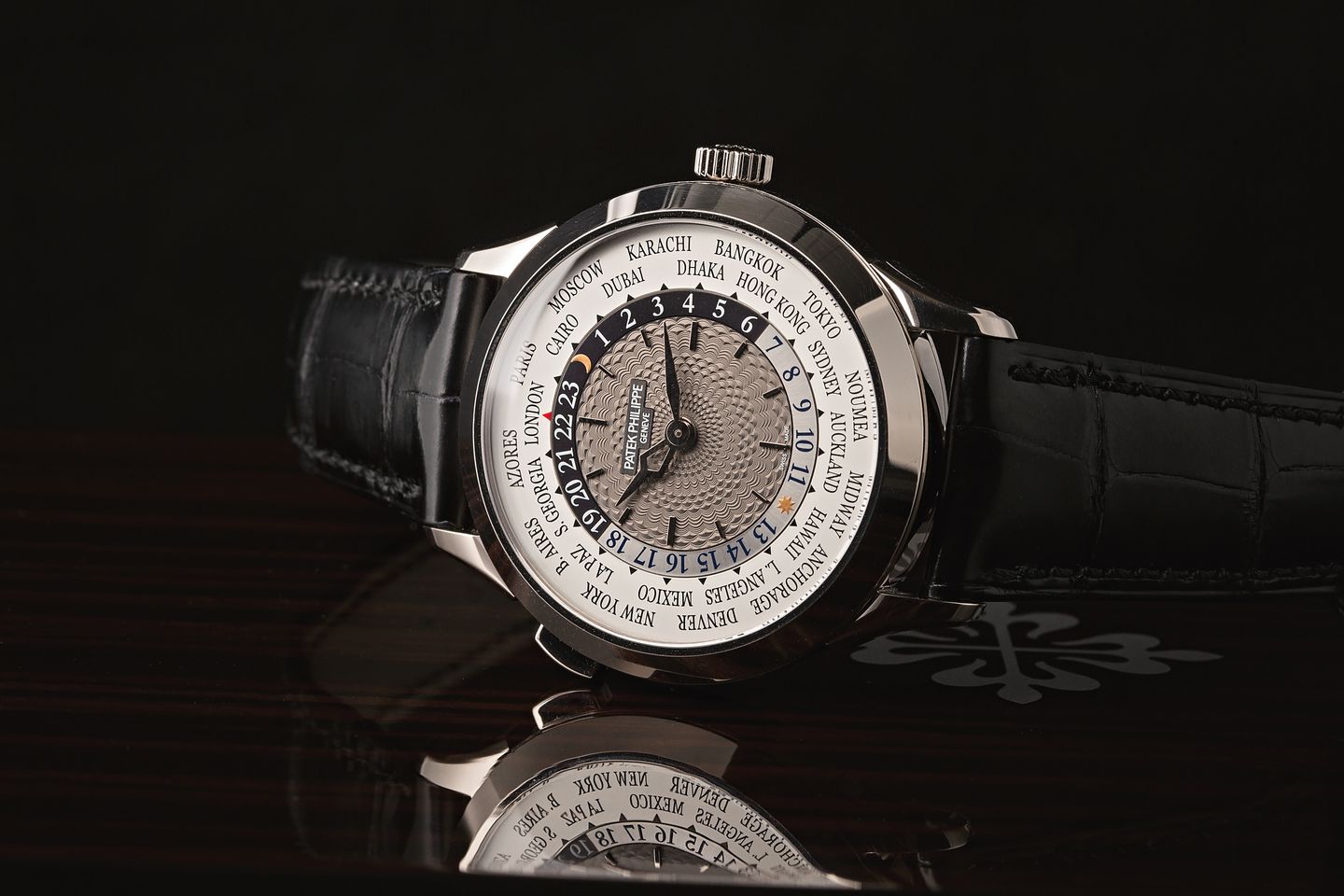
Patek Philippe Caliber 240 HU
To set the Patek World Time watch, first make sure that your corresponding city is positioned at the top of the dial. Switching through cities is just a matter of pushing the button on the side of the case at the 10 o’clock location. When your city is in position, use the winding crown to turn the center hands to set the local time – while also making sure that the appropriate day or night numeral on the 24-hour disk is positioned right below your city at 12 o’clock.
Once local city and time are adjusted, reading all 24 time zones is a breeze. Plus, if you travel to another location, simply push the button at 10 o’clock to change the city at 12 o’clock accordingly.
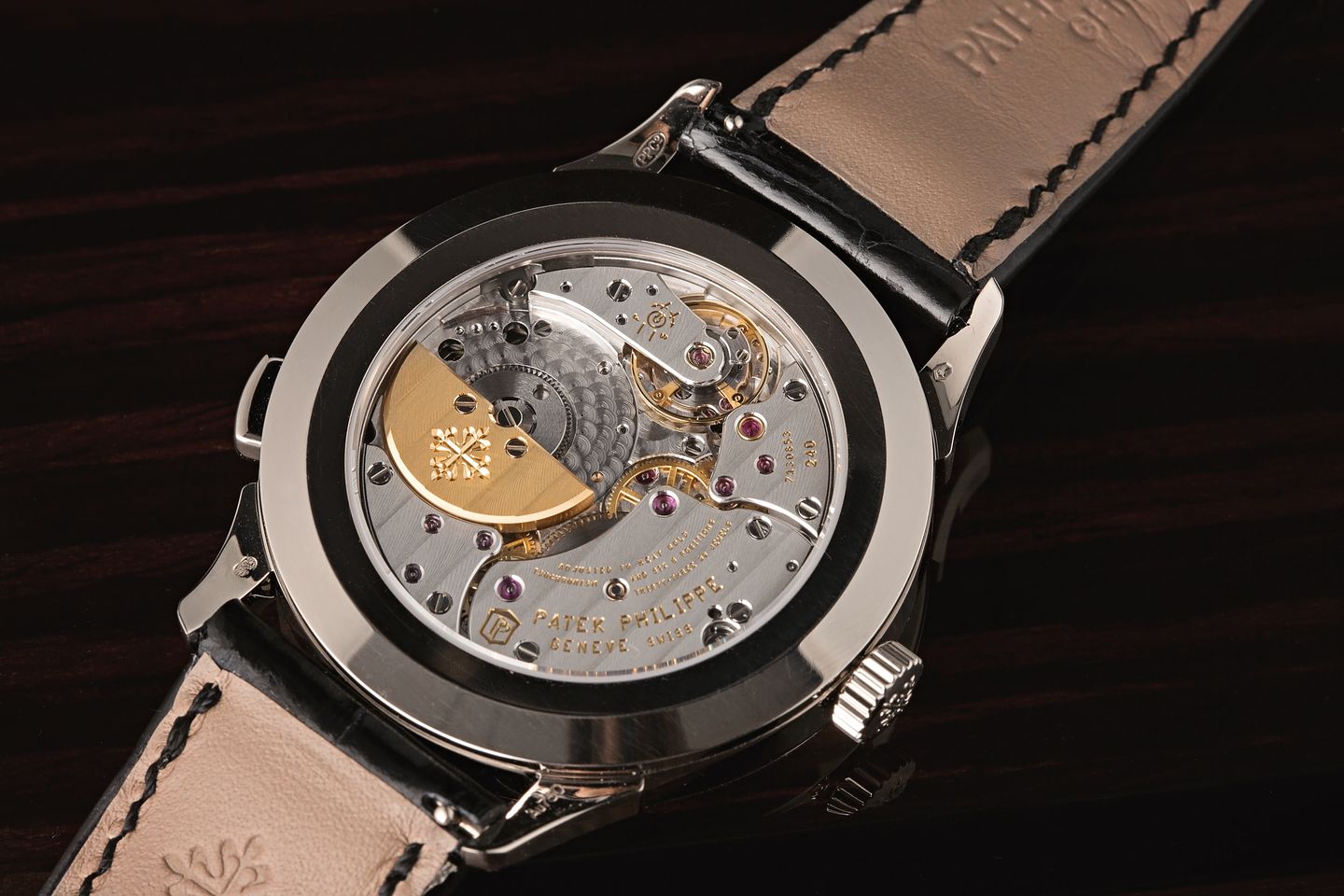
Flip the watch around and you’ll spot the Patek Philippe Caliber 240 HU through the sapphire caseback. In true Patek form, the movement is intricately hand-decorated with different finishes. In striking contrast to the predominately silver-tone of the movement is its famous mini-rotor – craft in solid 22k yellow gold, and engraved with the Patek logo. The automatic movement beats at a frequency of 21,600 vph and supplies the World Time ref. 5230 with a 48-hour power reserve.
Simple to use, gorgeous to look at, and exceedingly prestigious to own, a Patek Philippe World Time 5230G is the ultimate watch to wear when traveling in style!
